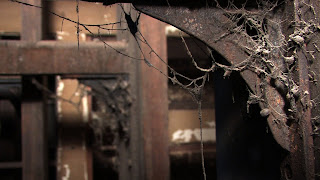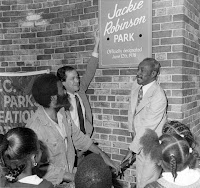 The Preservation League of New York State announced today the League’s Seven to Save for 2009. As part of New York State’s Quadricentennial celebration, the Preservation League will use its endangered properties program, Seven to Save, to support and enhance the year-long commemoration of the voyages of Henry Hudson, Robert Fulton and Samuel de Champlain. In 2009, all Seven to Save designees are located in the Hudson and Champlain Valleys – in Clinton, Columbia (2), Dutchess, Essex, New York and Rensselaer Counties.
The Preservation League of New York State announced today the League’s Seven to Save for 2009. As part of New York State’s Quadricentennial celebration, the Preservation League will use its endangered properties program, Seven to Save, to support and enhance the year-long commemoration of the voyages of Henry Hudson, Robert Fulton and Samuel de Champlain. In 2009, all Seven to Save designees are located in the Hudson and Champlain Valleys – in Clinton, Columbia (2), Dutchess, Essex, New York and Rensselaer Counties.
“New York State is especially rich in maritime resources and waterfront communities,” said Jay DiLorenzo, President of the Preservation League. “The region from the Canadian border to New York Harbor is celebrated for its beauty, and boasts a strong tradition of settlement by Native Americans followed by French, Dutch, English and others who made important contributions reflected in the area’s buildings and landscapes. Unfortunately, many of the valued historic resources that illustrate this heroic saga are threatened by insensitive, ineffective or insufficient public policies, general neglect, and in some cases, outright demolition.”
The 2009 Seven to Save designees are, in chronological order:
1. Magdalen Island
Red Hook, in Tivoli Bays, Dutchess County
(Late Archaic, 6,000-3,000 years ago, through post-contact period)
Threat: Looting
Studies of Magdalen Island have shown that from the Late Archaic through the post-European contact period, the island has been used as a seasonal home by both Native Americans and Euro-Americans. The site could yield additional archeological information about the Hudson Valley’s early inhabitants.
2. Jan Van Hoesen House
Claverack, Columbia County
(Early 18th century)
Threat: Deterioration
Jan Van Hoesen, who built this house, was the grandson of Jan Franz Van Hoesen, original patentee of the area in the 1660s. The farmstead, while encroached upon by the adjacent mobile home park, remains intact and undisturbed. This site exemplifies the themes of Dutch settlement along the Hudson River and its tributaries.
3. Gunboat Spitfire
Lake Champlain, Essex and Clinton Counties
(1776)
Threat: Natural, including non-native aquatic species, and vandalism
This vessel was part of the American fleet which held the British at bay for a year and contributed to the American victory at Saratoga in 1777. The Spitfire is not only the most significant underwater archeological site on the bottom of Lake Champlain, it illustrates the interconnected history of the Hudson and Champlain Valleys.
4. Plumb-Bronson House
Hudson, Columbia County
(1811, 1838, 1849)
Threat: Many years of unchecked deterioration
Samuel Plumb, owner and operator of a fleet of tow boats on the Hudson River, purchased this property and built his home here in 1811. In 1838, Dr. Oliver Bronson hired famed architect A. J. Davis to embellish the house, and brought him back in 1849 to reorient the house to the Hudson River. Now, the not-for-profit Historic Hudson needs to determine a new use and plans for site stewardship.
5. Fort Montgomery
Rouse’s Point, Clinton County
(1844-1872)
Threat: Deterioration, need for stabilization
Situated on the border between the United States and Canada, Island Point is where Lake Champlain enters the Richelieu River. It was first fortified in 1818 as the Northern Gateway linking the St. Lawrence and Hudson Rivers. Fort Montgomery was built in the mid-19th century and seen as a crucial fortification by Civil War strategists. This site symbolizes the shared history of these two nations.
6. Burden Iron Works Museum
Troy, Rensselaer County
(1881-1882)
Threat: Deterioration
This building stands as architect Robert Robertson’s best surviving iron works and an important reminder of the Hudson River’s industrial heritage. Robertson designed the building as the offices of the Burden Iron Company, the first in the world to manufacture horseshoes by machine. The site is now operated as a museum of commerce and industry, as well as the offices of the Hudson Mohawk Industrial Gateway, the not-for-profit which owns the building.
7. Historic South Street Seaport
New York City, New York County
(Tin Building, 1907 and New Market Building, 1939)
Threat: Demolition, loss of context
The South Street Seaport and Fulton Market are historically linked to Fulton and his ferry to Brooklyn, as well as the theme of commerce along the Hudson River. General Growth Properties proposes out-of-scale new development, requiring demolition of the National Register-eligible New Market Building and the relocation of the Tin Building. This site illustrates the need for careful planning along and stewardship of New York State’s waterfront, especially within waterfront historic districts.
The Preservation League will provide targeted support for these seven threatened historic resources throughout 2009, and will work with local groups to protect them.
“We are looking forward to providing strategic attention, extra effort, and new tools to secure the future of these endangered resources for generations to come,” said Erin Tobin, the Preservation League’s eastern regional director for technical and grant programs. “We are delighted to report that through the community involvement and preservation strategies we have created together with local advocates, many significant properties have been saved.”
The Preservation League of New York State, founded in 1974, is a not-for-profit organization dedicated to the protection of New York’s diverse and rich heritage of historic buildings, districts and landscapes. From its headquarters in Albany, it provides the unified voice for historic preservation. By leading a statewide movement and sharing information and expertise, the Preservation League of New York State promotes historic preservation as a tool to revitalize the Empire State’s neighborhoods and communities.
 The idea is a simple one: Take viewers to historical locations around New York City that are either off-limits to the general public, or are otherwise difficult or impossible to see. Then post them to the web.
The idea is a simple one: Take viewers to historical locations around New York City that are either off-limits to the general public, or are otherwise difficult or impossible to see. Then post them to the web.



